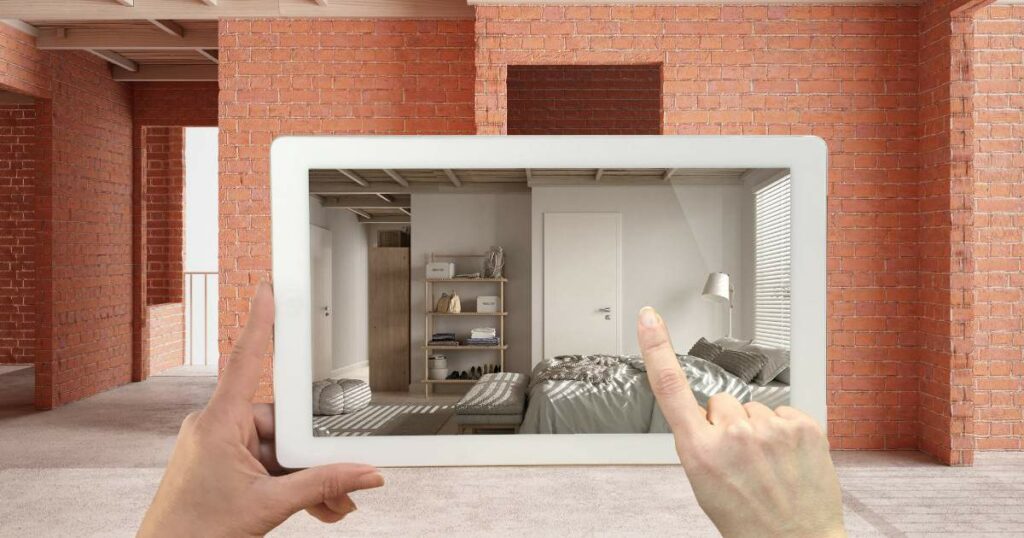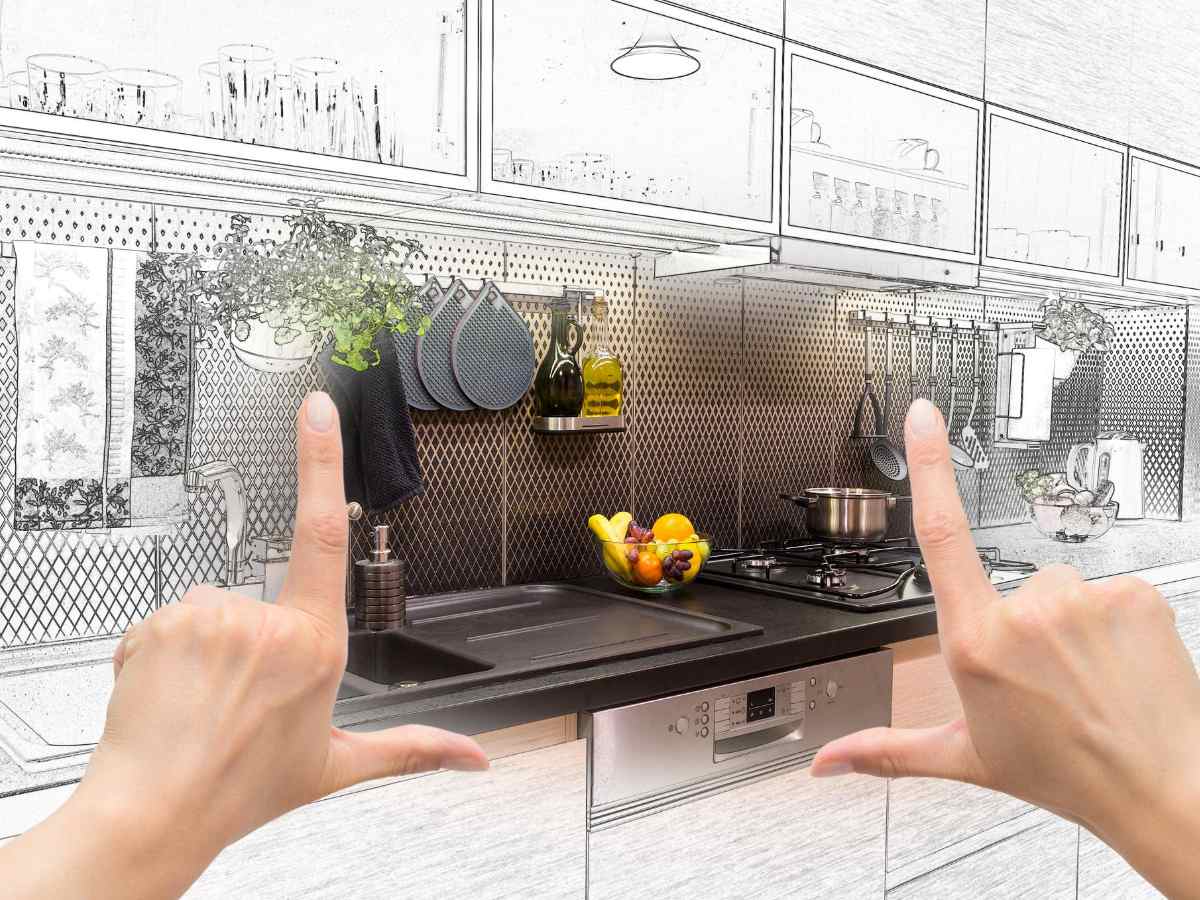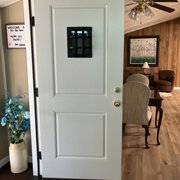Home remodeling has relied on well-established methods, often involving considerable manual labor, time, and resources for decades. Whether it’s drawing up architectural plans by hand or relying on simple tools to make measurements, these traditional approaches have their limitations:
Time-Consuming: The need for physical mock-ups, manual measurements, and face-to-face consultations can extend project timelines.
Accuracy: Human errors in measurements or design can lead to costly adjustments later.
Limited Visualization: It’s often challenging for homeowners to fully grasp how the final project will look, leading to dissatisfaction or expensive changes.
The Role of Technology in Modernizing Home Remodeling
Technology offers a transformative solution to these long-standing problems. Instead of relying on a paper blueprint, imagine having a 3D model that lets you walk through your remodeled home before construction begins. Or consider the potential for machine learning algorithms to offer design suggestions based on your tastes and previous successful remodels.
The merging of technology with home remodeling is not merely a supplementary addition but a revolutionary approach addressing many existing shortcomings. This synergistic blend has the power to:
Streamline Processes: Technologies like AR can shorten design phases by offering real-time mock-ups.
Enhance Accuracy: Tools like laser measurements and drones can capture precise data, reducing the margin of error.
Improve Customer Satisfaction: Technologies like VR allow homeowners to visualize the result accurately, ensuring they are content with the final product.
The Growing Importance of Technology in Home Remodeling
Integrating technology into home remodeling isn’t a fleeting trend; it represents a shift elevating the entire industry. With the increasing availability of high-tech tools and software, we’re seeing changes in efficiency and the possibilities of what can be achieved in home improvement. Here’s how technology is making a substantive impact:
How Tech Solutions Are Elevating the Industry
Sustainability: IoT sensors (Internet of things, basically connecting things to the internet and explained in more detail latrine article) can optimize home energy usage, supporting the growing trend towards sustainable living.
Accessibility: Apps and software make it easier for homeowners to engage with architects, contractors, and designers, regardless of geographic location.
Customization: AI algorithms analyze data to offer personalized design solutions, thereby enhancing the level of customization that can be achieved.
Risk Mitigation: Advanced simulation tools can predict structural issues or design flaws before construction starts, helping to mitigate risks.
Compliance: Software tools can automatically check designs for compliance with local building codes, reducing legal hassles.
Benefits: Time, Accuracy, and Cost
Technology is a powerful antidote in a sector where time and budget overruns are not uncommon.
Time Savings: Digital mock-ups and simulations can reduce the design phase by weeks, allowing faster project completion.
Enhanced Accuracy: Digital tools enable pinpoint accuracy, from laser-guided measurements to machine-assisted design, substantially reducing the need for costly corrections.
Cost Efficiency: Automated tools can optimize material usage and waste management, directly translating to cost savings.

Technologies that Are Making an Impact
The confluence of multiple technological advancements is transforming the home remodeling industry from a labor-intensive sector to a streamlined, digitally-enabled landscape. This section explores various technologies that are contributing to this metamorphosis.
Augmented Reality (AR)
Augmented Reality overlays elements in the real world, often through a smartphone or tablet camera.
Applications in Home Remodeling
Imagine pointing your smartphone at an empty room and seeing how different furniture or wall colors would look in real-time. This facilitates quicker and more informed decision-making.
Pros and Cons
Pros: Real-time visualization, increased customer engagement, eliminates guesswork.
Cons: It may require specialized hardware a somewhat steep learning curve.
Virtual Reality (VR)
Virtual Reality immerses one in a digital environment, usually through a VR headset.
Applications in Home Remodeling
VR can provide a full-scale, walkable model of a planned remodel, offering a level of detail and immersion that 2D blueprints can’t provide.
Pros and Cons
Pros: High detail and immersive experience can replace physical mock-ups.
Cons: High costs for high-quality simulations, accessibility can be an issue (requires VR headsets).
Internet of Things (IoT)
The Internet of Things involves embedding physical objects with sensors to collect and exchange data.
Applications in Home Remodeling
Sensors can monitor temperature, humidity, or structural integrity, providing data that can influence remodeling decisions.
Pros and Cons
Pros: Real-time data collection can integrate with other smart home systems.
Cons: Privacy concerns and ongoing costs for data management.
Artificial Intelligence (AI)
Artificial Intelligence refers to machine algorithms that mimic human intelligence, including learning and problem-solving.
Applications in Home Remodeling
AI can analyze large data sets for pattern recognition, potentially suggesting design options or optimizing project management.
Pros and Cons
Pros: Efficient data analysis adaptive learning improves project outcomes.
Cons: Data privacy concerns high setup costs.

3D Printing
3D Printing involves crafting three-dimensional objects, typically by layering many thin layers of material.
Applications in Home Remodeling
3D Printing offers a new realm of possibilities in home decor and structural elements, from custom furniture to intricate design elements.
Pros and Cons
Pros: Enables intricate designs and quick production of prototypes.
Cons: High initial costs, limited to certain types of materials.
Drones
Drones are unmanned aerial vehicles controlled by pilots from the ground or programmed to follow a specific flight path.
Applications in Home Remodeling
Drones can capture aerial photos for site analysis; some advanced drones can even assist in construction tasks.
Pros and Cons
Pros: Comprehensive site analysis can reach inaccessible areas.
Cons: Regulatory challenges, limited by weather conditions.

Implementing Technology in Your Next Remodeling Project
So, you’re convinced that technology can offer significant advantages in your upcoming home remodeling project, but you might wonder, “Where do I start?” The following section outlines the steps to implement technology into your next home remodel efficiently.
Identifying Your Needs
The first step is pinpointing what you aim to achieve with the remodel. Are you seeking energy efficiency, a particular aesthetic, or perhaps more space? Knowing your goals will help you choose the technologies most suited to your needs.
Researching and Selecting Technologies
Once you’ve outlined your needs, research which technologies could help you achieve those goals. Whether AR for better visualizations or IoT for smart home integration, your chosen technologies should align with your project’s objectives.
Consulting with Professionals
Bringing in architects, designers, or contractors well-versed in these technologies can offer invaluable expertise. These professionals can guide you through the options and help you make informed decisions.
Budget Planning
Adding technology to your project will have budgetary implications. Therefore, you should determine how much you’re willing to invest in tech-based solutions early. While some technologies may have high upfront costs, they could lead to long-term savings.
Project Timeline
Integrating technology often requires additional setup time. Make sure to account for this in your project timeline. Some technologies may speed up the project once implemented, so weigh these factors carefully when planning.
Proof of Concept
Before fully investing, consider running a small-scale proof of concept to evaluate the chosen technology’s efficacy. For example, you could use AR software to visualize a single-room remodel before applying it to your home.
Implementation
Once satisfied with the technology’s performance during the proof of concept, implement it into the broader remodeling project. Keep an open line of communication with all stakeholders to address any challenges promptly.
Post-Project Assessment
After the project’s completion, evaluate the effectiveness of the technology used. Did it meet your expectations? This assessment can serve as a valuable learning experience for future projects.

Common Pitfalls and How to Avoid Them
Even with the most cutting-edge technologies, obstacles can arise. Being forewarned is forearmed, so let’s identify common pitfalls you might encounter when incorporating technology into your home remodeling project and strategies to avoid them.
Over-Reliance on Technology
The Pitfall: Technology offers numerous benefits, but relying too heavily on it can lead to disappointment, especially if the technology doesn’t deliver as expected.
Avoidance Strategy: Always have a backup plan. Traditional blueprints should also be available if you use AR to visualize designs.
Inadequate Training
The Pitfall: Investing in high-tech solutions won’t yield much value if you or your contractors don’t know how to use them effectively.
Avoidance Strategy: Ensure proper training for all users. Also, many technology providers offer robust customer support and educational materials. Make use of these resources.
Budget Overflows
The Pitfall: Tech solutions can sometimes lead to unexpected costs, causing you to overshoot your budget.
Avoidance Strategy: Include a contingency fund in your budget specifically for technology-related expenses. Also, evaluate the ROI of each tech tool you plan to use.
Interoperability Issues
The Pitfall: Not all technologies work well together. For instance, smart home devices from different manufacturers might not be compatible.
Avoidance Strategy: Prioritize technologies that follow industry standards for interoperability. Alternatively, consult professionals who can ensure seamless integration.
Data Privacy Concerns
The Pitfall: Technologies like IoT and AI often require data collection, which could pose privacy risks.
Avoidance Strategy: Stick with solutions that offer robust security features and comply with regulations. Always read privacy policies and terms of service carefully.
Overestimating Capabilities
The Pitfall: High expectations from technology can lead to disappointment if the tools don’t perform as well as you’d hoped.
Avoidance Strategy: Set realistic expectations and understand the limitations of the technology you’re considering.
Vendor Lock-In
The Pitfall: Being tied to a single vendor for products or services can lead to higher costs and reduced flexibility.
Avoidance Strategy: Opt for flexible solutions and provisions for easy data export and integration with other services.

Home Remodeling Revolution
Integrating technology into home remodeling represents more than a mere trend; it’s an evolution in how we envision, plan, and execute these transformations. The possibilities are broad and varied, from visualization tools like AR and VR to data-rich environments enabled by IoT and AI. Challenges exist while the advantages are numerous, from efficiency gains to wider design options.
Budgetary concerns, the need for specialized training, and data privacy are all factors that demand careful planning and thoughtful implementation. As we venture further into this exciting frontier, the harmonious blend of technology with traditional remodeling practices promises to offer the most impactful results. Your home is more than just a living space; it’s a canvas for your lifestyle and aspirations. With technology, that canvas gets exponentially larger and the palette much more diverse.
Frequently Asked Questions
Q: Is Incorporating Technology into Home Remodeling Expensive?
A: Costs can vary depending on the technologies involved. While some solutions may have high upfront costs, they can offer long-term savings.
Q: Do I Need to be Tech-Savvy to Use These Technologies?
A: Not necessarily. Many modern platforms are designed to be user-friendly. However, some level of training or professional assistance can be beneficial.
Q: What if the Technology I Choose Becomes Obsolete Quickly?
A: It’s a valid concern. Whenever possible, opt for scalable and upgradable technologies to extend their usefulness.
Q: Will These Technologies Speed up my Remodeling Project?
A: Many technologies can streamline various project phases, but the time saved will depend on several factors. It includes the complexity of the project and the technologies used.
Q: Do I Need Specialized Contractors to Implement These Technologies?
A: A general contractor can handle many tasks, but specific technologies may require specialized skills. Consulting professionals with experience in the technologies you wish to implement is often advised.
Q: Can I Mix Traditional Methods with These New Technologies?
A: Absolutely, blending new technologies with traditional methods often provides a balanced approach to home remodeling.



























